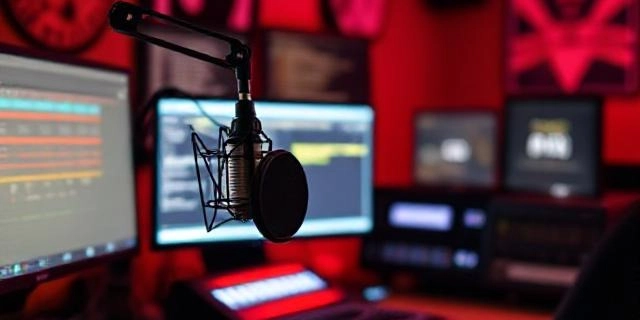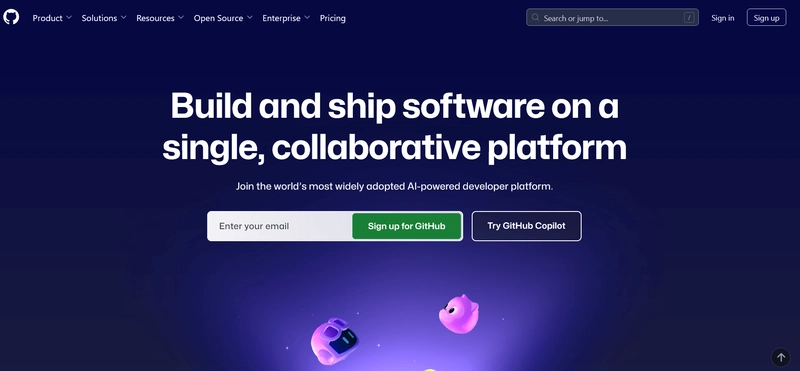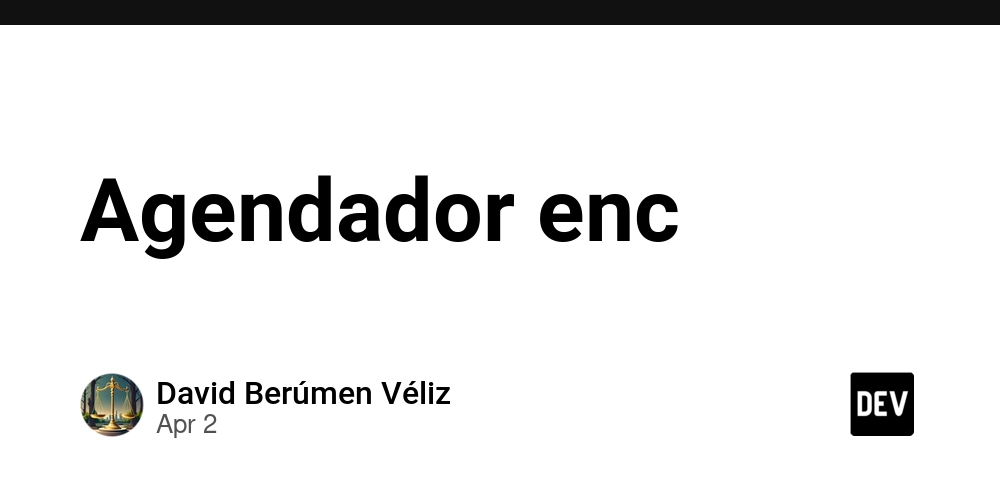Scheduling Your Shows: How Automation Makes Running a Station Easier
Introduction Ever dreamed of running your own radio station but thought it would be too time-consuming or complex? You're not alone. Thousands of creators are jumping into the audio space and discovering that modern tools make it easier than ever to create radio station—especially when automation does the heavy lifting. From midnight playlists to pre-scheduled interviews, automation is no longer a bonus feature—it’s the backbone of successful stations around the world. What Is Broadcast Automation? From Manual Schedules to Cloud Automation In the early days, running a station meant manually queuing every track, managing live talent, and babysitting the playlist. Today? A smart automation system can run your station 24/7—even while you sleep. The Core Components of an Automated Workflow Pre-built playlists Time-based scheduling Voice tracking Automatic ad insertion Failover and backup content Automation takes what used to be a full-time job and turns it into a scalable system that works behind the scenes. Key Benefits of Using Automation to Create a Radio Station 24/7 Broadcasting Without the Burnout You don’t have to be live 24/7 to keep your audience engaged. With automation, you can preload days (or weeks!) of content, giving you room to breathe or focus on growth. Consistency That Builds Audience Loyalty Listeners come back when they know what to expect. Automation ensures that your 8 AM news segment or Friday night hip-hop mix always hits at the right time. Instant Scaling for Growth Want to spin up a second channel? Add more hosts? Expand globally? Automation platforms are built to grow with you—without hiring a full production team. How Automation Works for Radio Stations Scheduling Software in Action Modern radio automation software lets you drag and drop songs, promos, ads, and segments into a schedule. Want your morning block to be upbeat and your night shift to be chill? Done. Rotations, Playlists, and Time Blocks You can set music categories to rotate automatically, ensuring variety without repetition. Set rules like: “Don’t play the same artist twice in an hour” “Keep energy levels high during commute hours” Ad Insertion and Dynamic Content Automated ad placement means monetization without manual effort. Some platforms even support dynamic ad switching based on time zones or listener location. Building a Station From Scratch Tools You’ll Need to Create a Radio Station A broadcast automation platform A streaming server (like Icecast or Shoutcast) A domain/website Optional: microphones, mixers, and headphones for live shows Choosing Your Automation Platform Look for features like: Cloud access Easy scheduling Music rotation rules Auto-DJ functionality Cloud-Based vs. Local Solutions Local setups give you full control, but require more maintenance. Cloud-based platforms are easier, cheaper, and allow you to manage everything from your laptop. Real-Life Use Cases Indie Music Stations Promote emerging artists with genre-based scheduling and automated shoutouts. Educational and Campus Stations Perfect for rotating hosts, pre-recorded lectures, and student-driven programming. Faith-Based and Community Channels Deliver consistent spiritual or local content, with automated sermons, music, and announcements. Features That Matter for Long-Term Success Remote Access and Control Manage your station from anywhere—even your phone. Many automation platforms offer mobile-friendly dashboards. Listener Analytics and Reports Know what’s working. Track listener engagement, top-performing segments, and playback history. Voice Tracking and Live Insertions Add personalized content without going live. Voice tracking lets you pre-record segments that sound natural and timely. Mistakes to Avoid When Setting Up Automation Overloading the Playlist More isn’t always better. Don’t confuse variety with chaos. Keep your playlists tight, themed, and strategic. Ignoring Listener Feedback Automation doesn't mean going on autopilot. Always check in with your audience through polls, requests, or email. Not Backing Up Your Content Automate your backups too! Use cloud storage or external drives to protect your valuable audio files. The Future of Radio Station Management AI-Generated Playlists Yes, AI can now curate playlists based on mood, tempo, or trending topics. It’s like having a music director on-call 24/7. Integration with Smart Devices Your station should be on Alexa, Google Home, and even smart cars. Automation makes multi-platform publishing easier. Monetization via Programmatic Ads Real-time bidding for audio ads is the future. Some automation tools integrate directly with ad marketplaces to maximize revenue. Conclusion If you've been thinking about how to create a radio station, there's never been a better (or easier) time. Automation d

Introduction
Ever dreamed of running your own radio station but thought it would be too time-consuming or complex? You're not alone. Thousands of creators are jumping into the audio space and discovering that modern tools make it easier than ever to create radio station—especially when automation does the heavy lifting.
From midnight playlists to pre-scheduled interviews, automation is no longer a bonus feature—it’s the backbone of successful stations around the world.
What Is Broadcast Automation?
From Manual Schedules to Cloud Automation
In the early days, running a station meant manually queuing every track, managing live talent, and babysitting the playlist. Today? A smart automation system can run your station 24/7—even while you sleep.
The Core Components of an Automated Workflow
Pre-built playlists
Time-based scheduling
Voice tracking
Automatic ad insertion
Failover and backup content
Automation takes what used to be a full-time job and turns it into a scalable system that works behind the scenes.
Key Benefits of Using Automation to Create a Radio Station
24/7 Broadcasting Without the Burnout
You don’t have to be live 24/7 to keep your audience engaged. With automation, you can preload days (or weeks!) of content, giving you room to breathe or focus on growth.Consistency That Builds Audience Loyalty
Listeners come back when they know what to expect. Automation ensures that your 8 AM news segment or Friday night hip-hop mix always hits at the right time.Instant Scaling for Growth
Want to spin up a second channel? Add more hosts? Expand globally? Automation platforms are built to grow with you—without hiring a full production team.
How Automation Works for Radio Stations
Scheduling Software in Action
Modern radio automation software lets you drag and drop songs, promos, ads, and segments into a schedule. Want your morning block to be upbeat and your night shift to be chill? Done.Rotations, Playlists, and Time Blocks
You can set music categories to rotate automatically, ensuring variety without repetition. Set rules like:
“Don’t play the same artist twice in an hour”
“Keep energy levels high during commute hours”
- Ad Insertion and Dynamic Content Automated ad placement means monetization without manual effort. Some platforms even support dynamic ad switching based on time zones or listener location.
Building a Station From Scratch
Tools You’ll Need to Create a Radio Station
A broadcast automation platform
A streaming server (like Icecast or Shoutcast)
A domain/website
Optional: microphones, mixers, and headphones for live shows
Choosing Your Automation Platform
Look for features like:
Cloud access
Easy scheduling
Music rotation rules
Auto-DJ functionality
Cloud-Based vs. Local Solutions
Local setups give you full control, but require more maintenance. Cloud-based platforms are easier, cheaper, and allow you to manage everything from your laptop.
Real-Life Use Cases
Indie Music Stations
Promote emerging artists with genre-based scheduling and automated shoutouts.Educational and Campus Stations
Perfect for rotating hosts, pre-recorded lectures, and student-driven programming.Faith-Based and Community Channels
Deliver consistent spiritual or local content, with automated sermons, music, and announcements.
Features That Matter for Long-Term Success
Remote Access and Control
Manage your station from anywhere—even your phone. Many automation platforms offer mobile-friendly dashboards.Listener Analytics and Reports
Know what’s working. Track listener engagement, top-performing segments, and playback history.Voice Tracking and Live Insertions
Add personalized content without going live. Voice tracking lets you pre-record segments that sound natural and timely.
Mistakes to Avoid When Setting Up Automation
Overloading the Playlist
More isn’t always better. Don’t confuse variety with chaos. Keep your playlists tight, themed, and strategic.Ignoring Listener Feedback
Automation doesn't mean going on autopilot. Always check in with your audience through polls, requests, or email.Not Backing Up Your Content
Automate your backups too! Use cloud storage or external drives to protect your valuable audio files.
The Future of Radio Station Management
AI-Generated Playlists
Yes, AI can now curate playlists based on mood, tempo, or trending topics. It’s like having a music director on-call 24/7.Integration with Smart Devices
Your station should be on Alexa, Google Home, and even smart cars. Automation makes multi-platform publishing easier.Monetization via Programmatic Ads
Real-time bidding for audio ads is the future. Some automation tools integrate directly with ad marketplaces to maximize revenue.
Conclusion
If you've been thinking about how to create a radio station, there's never been a better (or easier) time. Automation doesn’t just save you time—it gives you superpowers. You can run a professional-sounding, 24/7 station without needing to be on-air around the clock.
Whether you’re spinning indie hits, sharing spoken word, or building a branded station, automation helps you focus on the content—not the chaos.









































































































































































![[The AI Show Episode 144]: ChatGPT’s New Memory, Shopify CEO’s Leaked “AI First” Memo, Google Cloud Next Releases, o3 and o4-mini Coming Soon & Llama 4’s Rocky Launch](https://www.marketingaiinstitute.com/hubfs/ep%20144%20cover.png)




























































































































![[DEALS] The All-in-One Microsoft Office Pro 2019 for Windows: Lifetime License + Windows 11 Pro Bundle (89% off) & Other Deals Up To 98% Off](https://www.javacodegeeks.com/wp-content/uploads/2012/12/jcg-logo.jpg)



























![Is this too much for a modular monolith system? [closed]](https://i.sstatic.net/pYL1nsfg.png)






















































































































_Andreas_Prott_Alamy.jpg?width=1280&auto=webp&quality=80&disable=upscale#)
































































































![What features do you get with Gemini Advanced? [April 2025]](https://i0.wp.com/9to5google.com/wp-content/uploads/sites/4/2024/02/gemini-advanced-cover.jpg?resize=1200%2C628&quality=82&strip=all&ssl=1)













![Apple Shares Official Trailer for 'Long Way Home' Starring Ewan McGregor and Charley Boorman [Video]](https://www.iclarified.com/images/news/97069/97069/97069-640.jpg)
![Apple Watch Series 10 Back On Sale for $299! [Lowest Price Ever]](https://www.iclarified.com/images/news/96657/96657/96657-640.jpg)
![EU Postpones Apple App Store Fines Amid Tariff Negotiations [Report]](https://www.iclarified.com/images/news/97068/97068/97068-640.jpg)
![Apple Slips to Fifth in China's Smartphone Market with 9% Decline [Report]](https://www.iclarified.com/images/news/97065/97065/97065-640.jpg)




































































































































